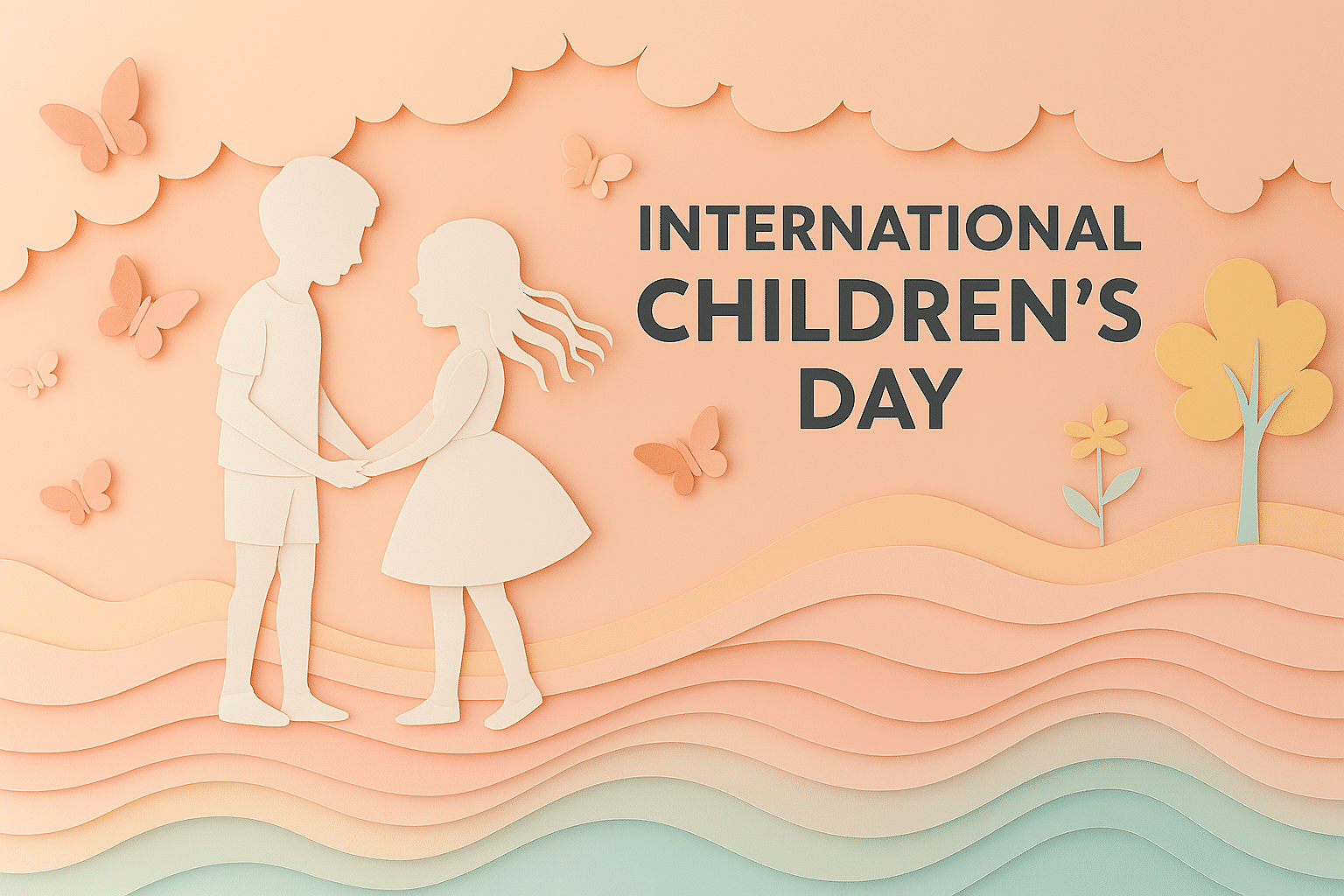What is International Children’s Day?
International Children’s Day is celebrated every year on June 1 in many countries across the world. The day focuses on the well-being, safety, and happiness of children. It reminds us to protect their rights, listen to their voices, and invest in their future.
Children are at the heart of every society. This day brings families, communities, and governments together to celebrate childhood and stand up for the needs of young people.
History and Origin
The first International Children’s Day was proposed in 1925 during the World Conference on Child Welfare in Geneva. The idea gained traction, and by 1950, many countries began marking June 1 as a day dedicated to children, following a declaration by the Women’s International Democratic Federation.
Since then, the day has become a meaningful tradition in parts of Europe, Asia, and Latin America. It is not connected to Universal Children’s Day in November, which is promoted by the United Nations. Instead, it reflects a more regional and cultural approach, with parades, concerts, and family events taking place in schools, parks, and public squares.
Who Participates in International Children’s Day?
- Governments: Organise programs to promote child safety, education, and health.
- Schools: Host special events, performances, or themed lessons about children’s rights.
- Non-profits and NGOs: Lead awareness campaigns and support services for children in need.
- Families: Spend the day together, focusing on play, bonding, and joy.
- Community groups: Plan local fairs, games, or storytelling events for children and parents.
Slogans and Themes
Slogans such as “Every Child Deserves a Childhood,” “Invest in Our Future,” and “For Every Child, Every Right” capture the day’s mission. Themes often focus on health, education, freedom, and happiness. Whether through song, play, or protest, the day is about giving children the space to shine.
Colors symbols and patterns
Colors
- Red: Symbolises love, energy, and strength.
- Blue: Represents safety and calm.
- Yellow and green: Bring in joy, youth, and growth.
Symbols
- Children holding hands: A sign of global unity and friendship.
- Balloons and kites: Stand for playfulness and freedom.
- Books or pencils: Highlight the right to learn and grow.
Patterns
- Rainbow motifs: Suggest inclusion and happiness.
- Stars and suns: Add brightness and warmth to the visuals.
- Handprints and footprints: Remind us of childhood creativity and curiosity.
Most Used Hashtags
- #InternationalChildrensDay
- #ChildrensDay
- #ForEveryChild
- #ChildrensRights
- #InvestInChildren
How to Celebrate International Children’s Day:
- Spend quality time with kids: Play games, tell stories, or plan a special outing.
- Support a child-focused charity: Donate, volunteer, or raise funds.
- Join a local event: Attend a parade, concert, or school celebration.
- Share online: Post messages of support using the day’s hashtags.
- Teach about children’s rights: Use stories or crafts to explain dignity, safety, and respect.
Why is International Children’s Day Important?
This day helps us refocus on what really matters: the health, happiness, and future of children. Around the world, too many young lives are marked by conflict, poverty, or neglect. International Children’s Day brings awareness and joy together, reminding us that children need protection, care, and room to dream.
Celebrating this day isn’t just symbolic. It is a chance to build better systems, stronger communities, and kinder homes;one child at a time.
Features
June 1: Children’s Day
Why do you keep falling for the same type?
Read the article Lovemaps: the hidden blueprint of our love.

